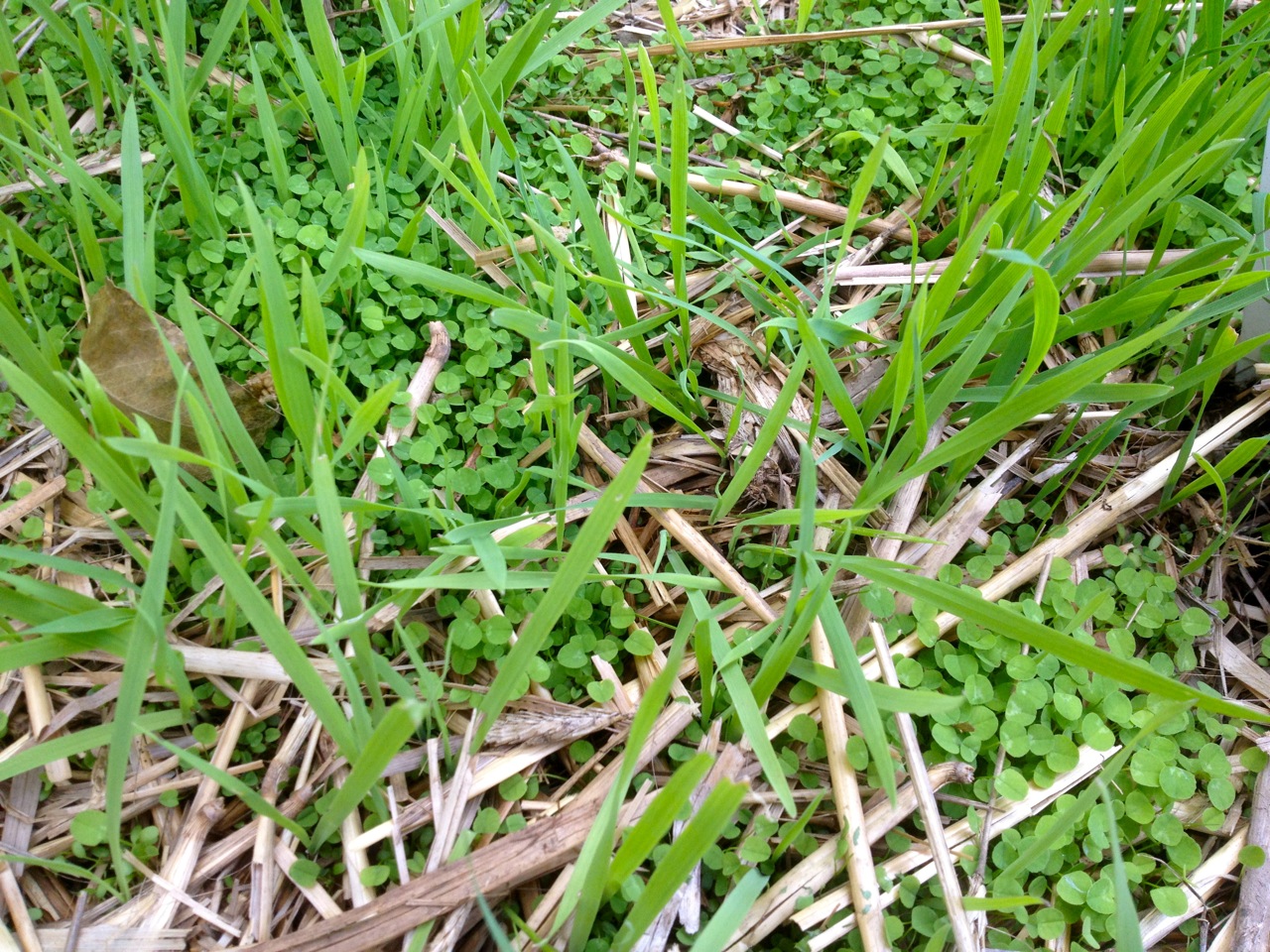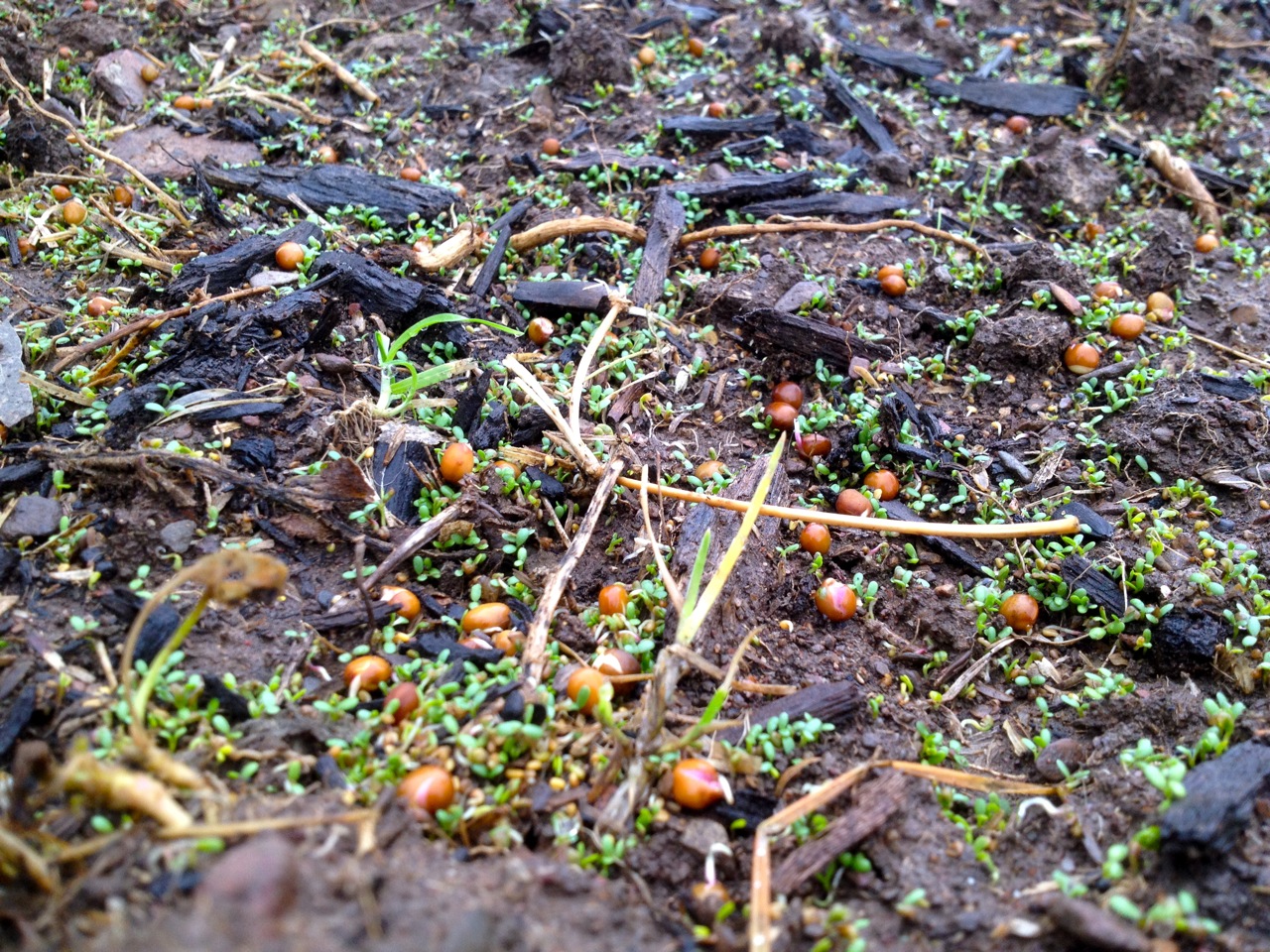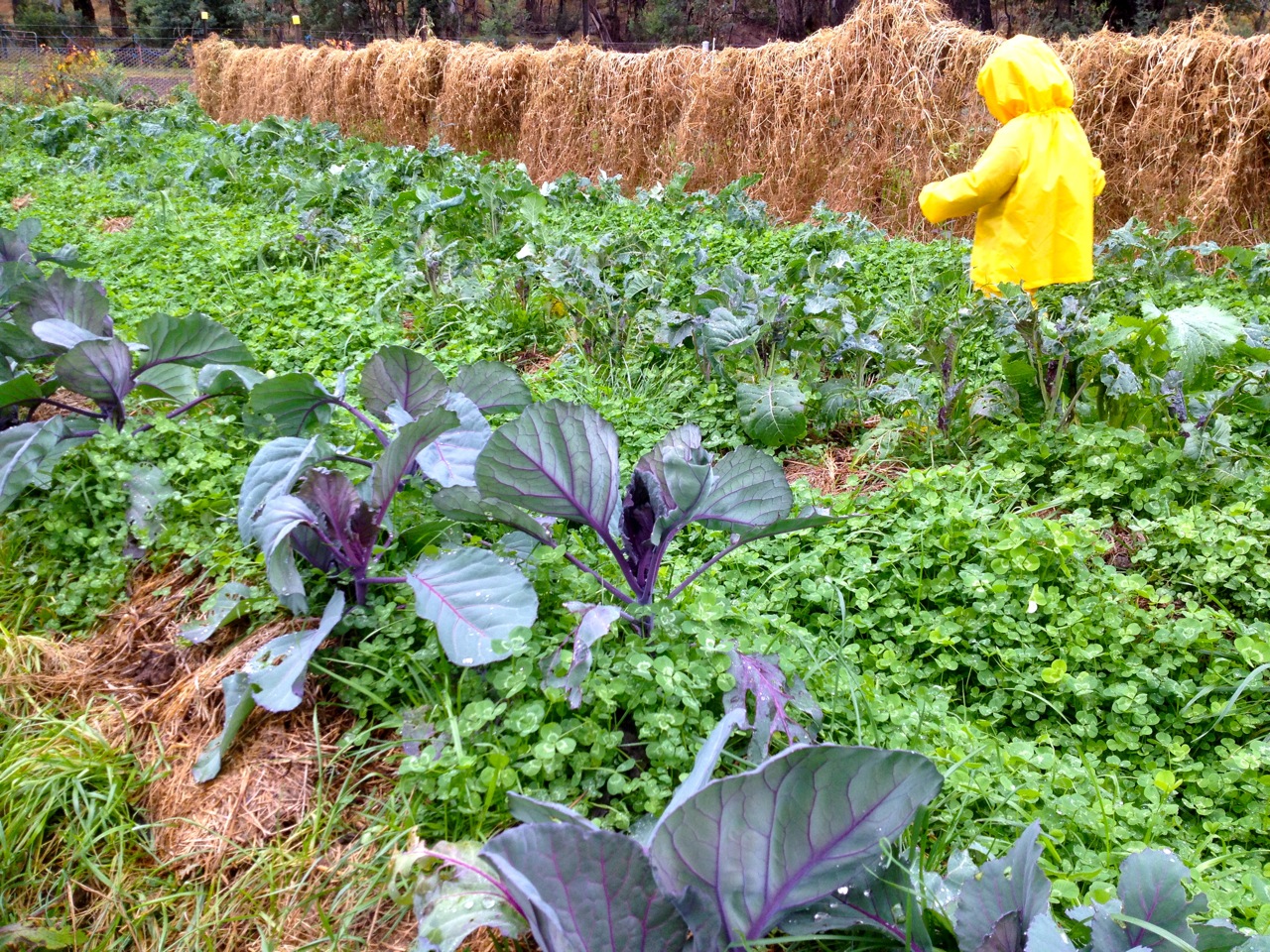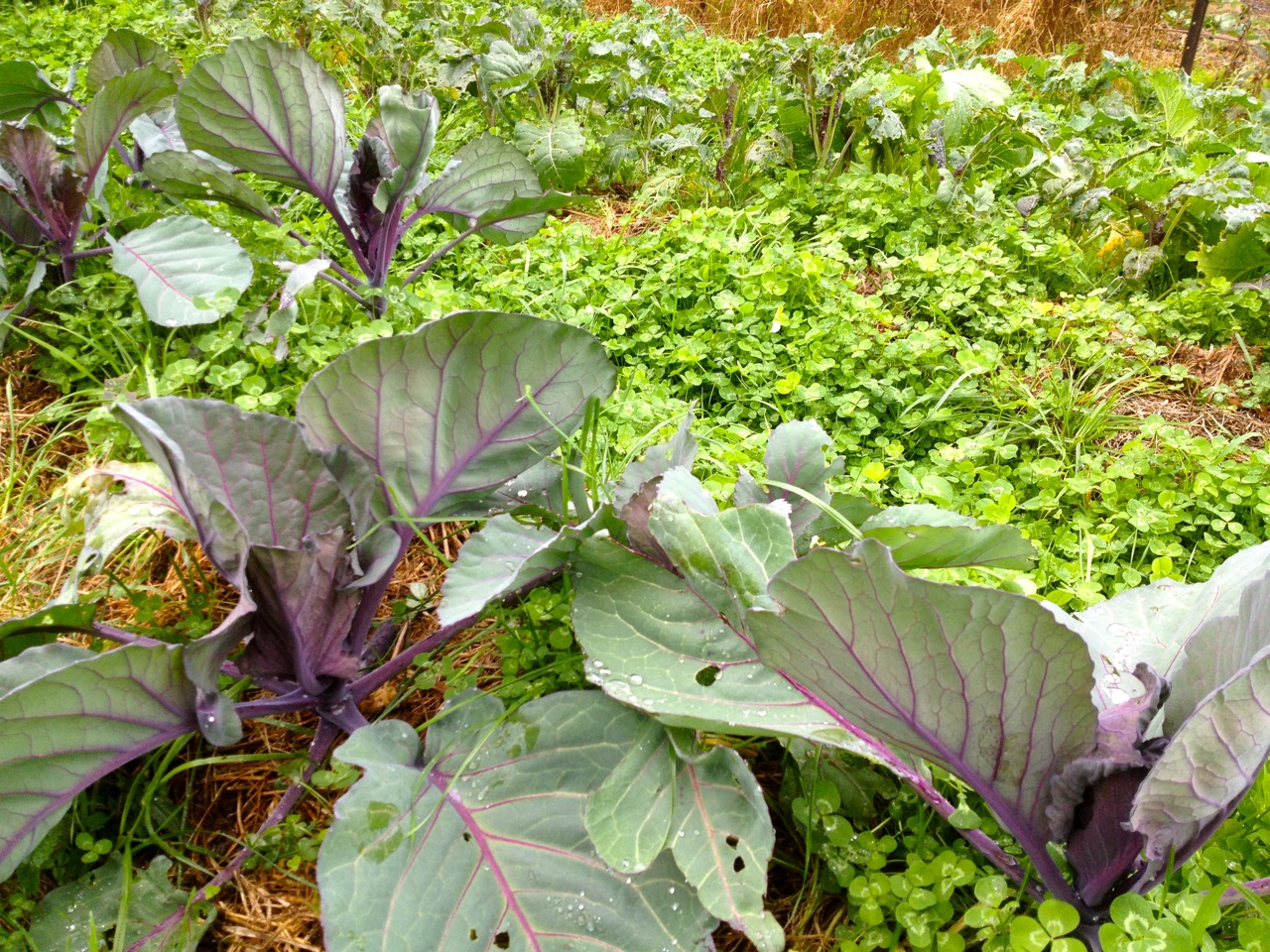Sowing Winter green manure crops are a crucial part of Milkwood Farm’s organic vegetable growing regime – the green manures convert sunlight to nutrients, then get dug into the soil in early Spring, and become food for us all.
Green manures in the veggie garden can also be used as a living understorey for growing vegetables – they help protect the soil, help retain water and provide a host of nutrients while they grow. We use them extensively all over Milkwood Farm.
Whether you’re talking about veggie patch or forest garden, green manures are a great way to replenish or build soils with minimal input – thanks to nature and photosynthesis, the green manure plants convert sunlight into biomass and nutrients for us, for free.
In the more exposed parts of Milkwood Farm we’ve used green manures when building earthworks such as dams and swales, and for these projects we’ve had mixed success, with some big disappointments due to incorrect species selection, drought, rabbits and the like.

Lab lab and pigeon pea planted as a cover crop on our newly completed swales in 2007, which didn’t go so well. These days we use more Milkwood climate+soil appropriate species… live and learn…

Oats and clover green manures popping up in the forest garden, in a new patch that has been liberated of cooch grass and is ready for some serious species stacking…

Green manure seeds (oats, clover and vetch) germinating in the market garden as a cover crop that will be dug in come early spring to enrich the soil for growing great veggies…
But in our more protected micro-climates, like the forest garden, or in the market garden where there is certainty of regular watering, green manures are already an essential part of the cycle of establishing and managing plantings, and will continue to be so.
Recently our friend Rob Avis put us onto this excellent overview of green manures and cover crops – well worth a look:
[scribd id=96225703 key=key-crl3cgj1zxus0tvrgfe mode=list]
So scatter ye clover seeds while ye may… and add some oats and vetch also.
If you’re champing at the bit to learn the craft of organic market gardening, some options include doing one of our market garden courses, doing a market garden internship, or maybe some wwoofing at Milkwood Farm to get a sense (and some skills) of what’s involved.
If you’re further afield but looking for skills feel free to comment below and we can probably point you at some options closer to where you are…
>> further adventures of the Milkwood market garden project…
















Reblogged this on Going Green and commented:
This article is an interesting article about cover crops. It makes me want to go scatter seeds on ever bare spot in my garden!
I sometimes buy a bag of cheap birdseed, and scatter that on an unused garden bed. You get a great variety of plants (millet, corn, sunflower, sorghum, oats, wheat, rye, and more). The species that like where you sowed them will sprout, the others won’t, but you’ll always get something growing. And it’s way cheaper than buying “proper” gardening seeds!
We have tried that in the past,but it mostly resulted in a carpet of birds… but still a very good idea, especially for smaller spaces 🙂
Hi Kirsten, what about sowing Green Harvests Good Bug Mix in with the green manures, around the crops? Would that be a good thing to do?
Hard to beat beans for green manure I reckon. Just my working theory, but they do have massive above ground biomass, full of sticky algins, stem fibre and fleshy leaves ready to breakdown at the slightest soil contact…
I’ve just received some mustard green GM and crimson clover GM seed for our 20sqm garden. We will be planting vegetables once it grows and creates some biomass for the soil. In the post above you say you dig it in? Does that means you turn the soil over as we did in the 70’s cause we didn’t know better? So, I will let you all know how it goes. This is my first venture back into the gardening thing for nearly 10 years as I just got too busy in life and forgot the thigns that keep me grounded…No… Read more »